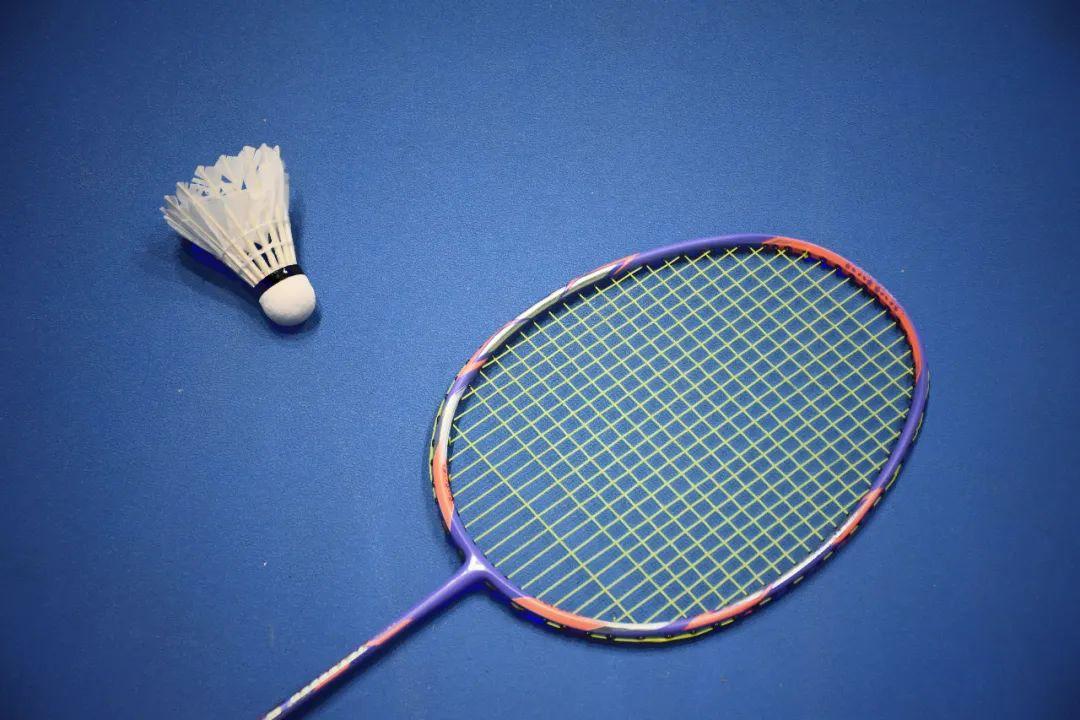
Everyone who knows me knows that I have a hobby-badminton!
There are many friends who play ball around, and I will know some beginners of badminton, but the basic etiquette and rules of badminton are still unclear, so I hereby write an article to introduce some knowledge about badminton.
From two aspects, playing etiquette and rules.
I. Playing etiquette (amateur)
Why do you talk about this first? Because it will make people like playing ball with you more. At the same time, it is also one of the manifestations of the ball’s character, and character is more important than technology.
1. Trust your teammates and respect your opponents.
Most badminton courts are dominated by doubles, and partners may be randomly matched. No matter how strong the partners are, please don’t point fingers or even blame the bad face on the court. You can teach after the game. Please trust your teammates when you are on the court.
Ps: If you dislike being weak, make yourself stronger.
Respect for opponents comes from dressing up and playing seriously. Some beginners wear shoes, jeans, skirts (non-sports skirts) and other clothes that are not suitable for playing. One is that they are easy to get hurt, and the other is that they don’t respect their opponents’ performance. Now that you know that you are going to play ball today, you should prepare your playing equipment in advance (jerseys, sneakers and rackets).
Ps: These words refer to friends who really want to learn how to play and improve their skills. Friends play for fun, so happiness is the most important thing, and rules and etiquette can be ignored.
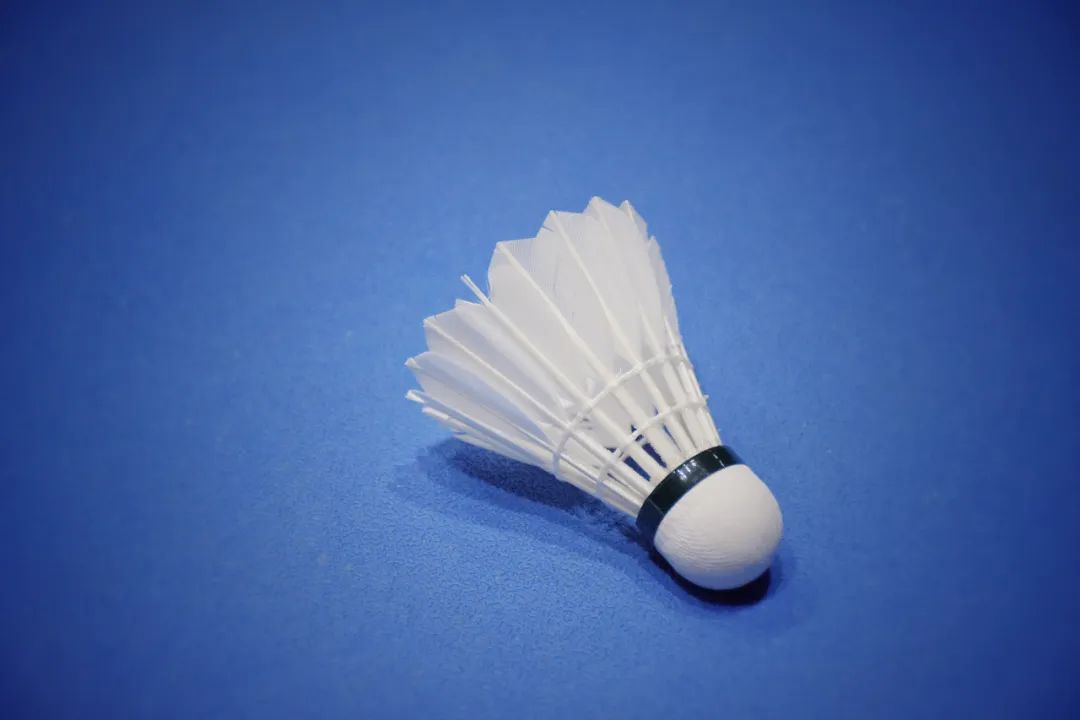
2. Whoever gets off the net will pick up the ball.
If you hit the ball in front of the net and don’t cross the net, please take the initiative to pick it up and serve it back to the opponent, especially when the ball falls on our court. Don’t turn your head and walk away when you are closer to the ball after it falls off the net. This is not good.
I know that many novices do it unconsciously, but unconsciously. If you know it, you can change it ~
3. Mainly the above two points, there are still some details that I won’t talk about, such as don’t dominate the court all the time, don’t press the net, don’t play football, don’t walk into the playing field, etc ~
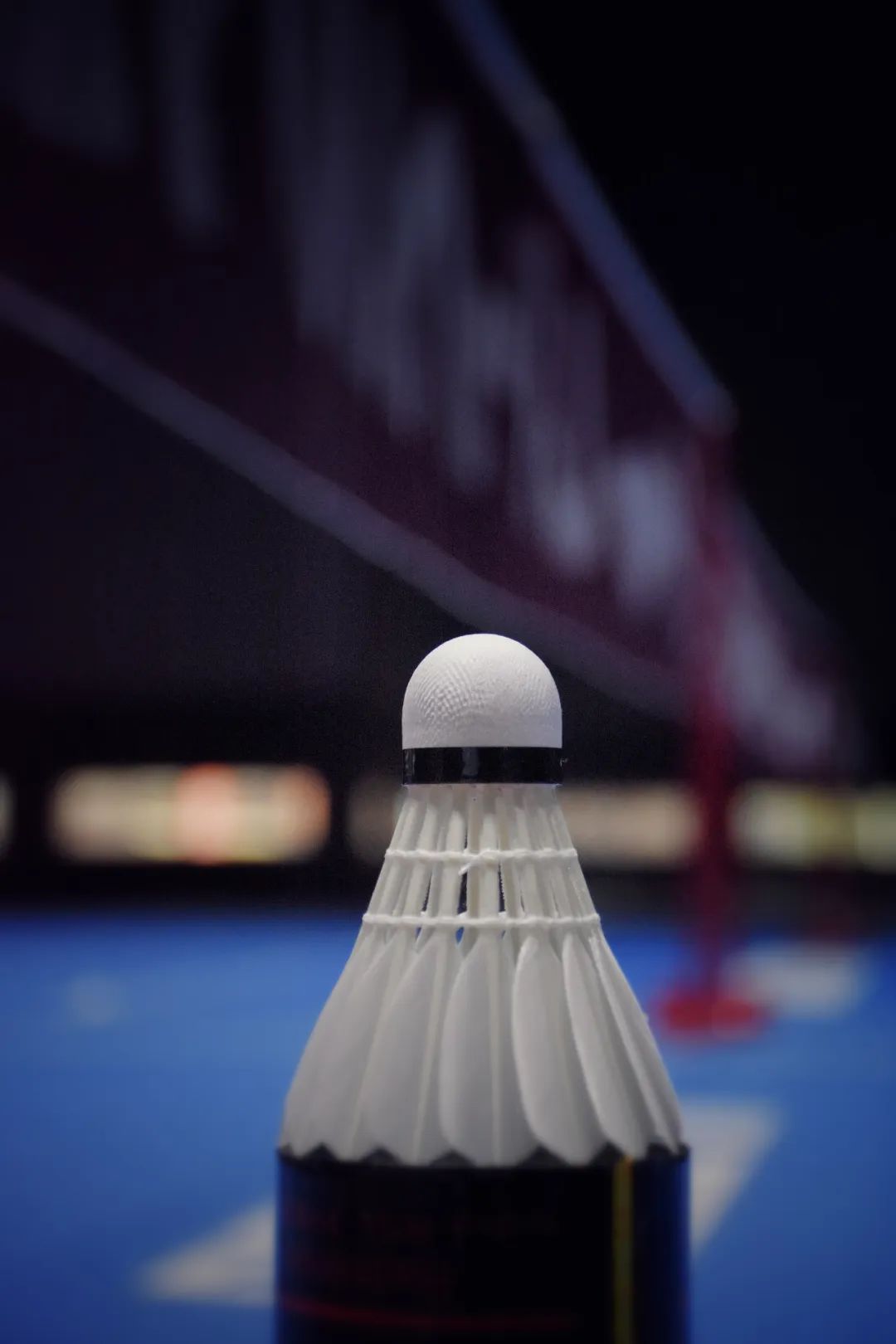
Let me talk about the basic rules of badminton:
First, the service rules
1. Regardless of singles and doubles, you need to serve/receive the ball diagonally (see the diagram below for details). The server and receiver need to be in the specified area. When serving, the server must touch the ground with both feet and cannot step on the line.
2. When serving, the position of the ball is required to be lower than the waist (below the belly button) and wrist of the server, so you can’t throw the ball and kill it directly;
3. The server has only one chance to serve, and the service ends when the ball hits the server’s racket or falls to the ground (although it is not so harsh on novices when playing);
4. In doubles, there is no limit to the position where the server and receiver’s teammates stand. You can stand on the same side or stand on both sides separately.
Second, singles/doubles serve and hitting areas
[singles]
Calculate the side of the service station according to the score we have won: when our score is even (including 0), we will serve in the right half, and when the score is odd, we will serve in the left half; The winner serves as the server in the next round (whoever scores serves).
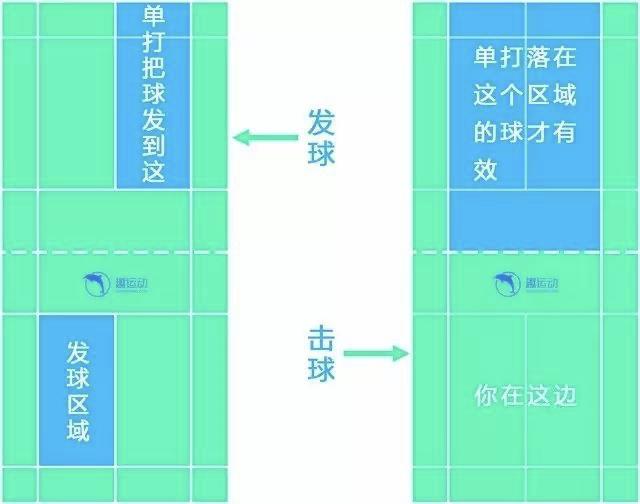
[doubles]:Serving and hitting area
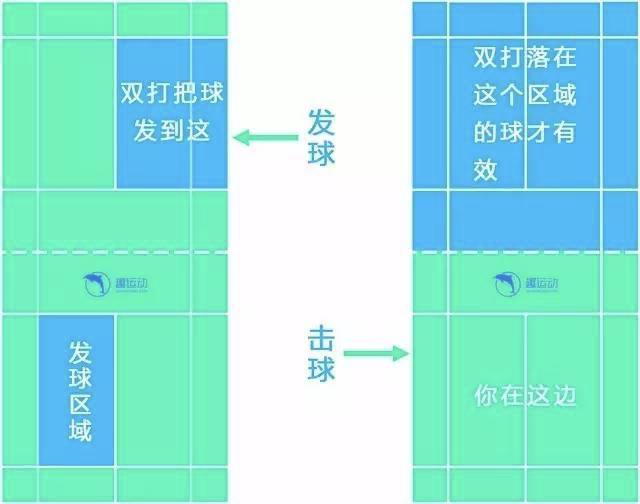
The rules of doubles can be summarized in three sentences:
1. Serve in the right half when our score is even, and serve in the left half when our score is odd (same as singles);
2. The winning side serves as the server in the next round;
3. When the server (A) scores, the two players exchange positions, and the server (A) continues to serve, and the position remains unchanged in other cases.
Looking at the picture is more intuitive:
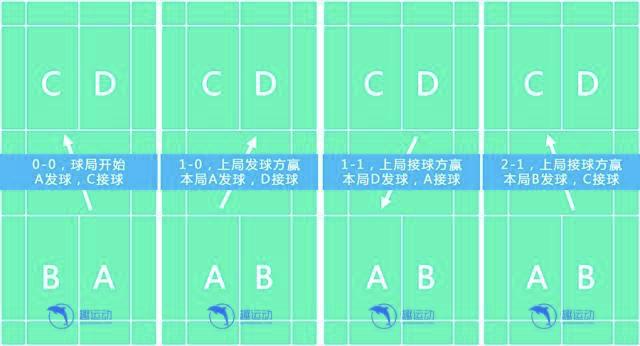
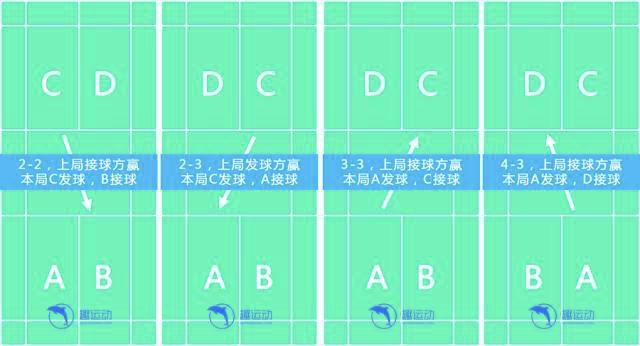
Third, scoring, changing sides, touching the net and crossing the net
[Scoring]
1. According to the 21-point system, the regular competition will be decided by two wins in three games;
2. If you win a goal, you will get 1 point. If you score 21 points first, one side will win a game.
3. If it is tied at 20, one side will win with 2 points in a row; Up to 30 points, the first 30 points to win;
4. The next game is served by the winner of the previous game.
[Changing sides]
1. After the first game, the two sides change sides;
2. If the score after the second game is 1: 1, the two sides change sides;
3. When the leader reaches 11 points in the third game, both sides change sides.
【 Touching the net and crossing the net 】
The racket and the body can’t touch the net, and touching the net is a loss of points. The racket can’t hit the ball through the opponent’s net, which counts as losing points.
Finally:
Badminton is a very interesting and great sport, I hope you can fall in love with it ~
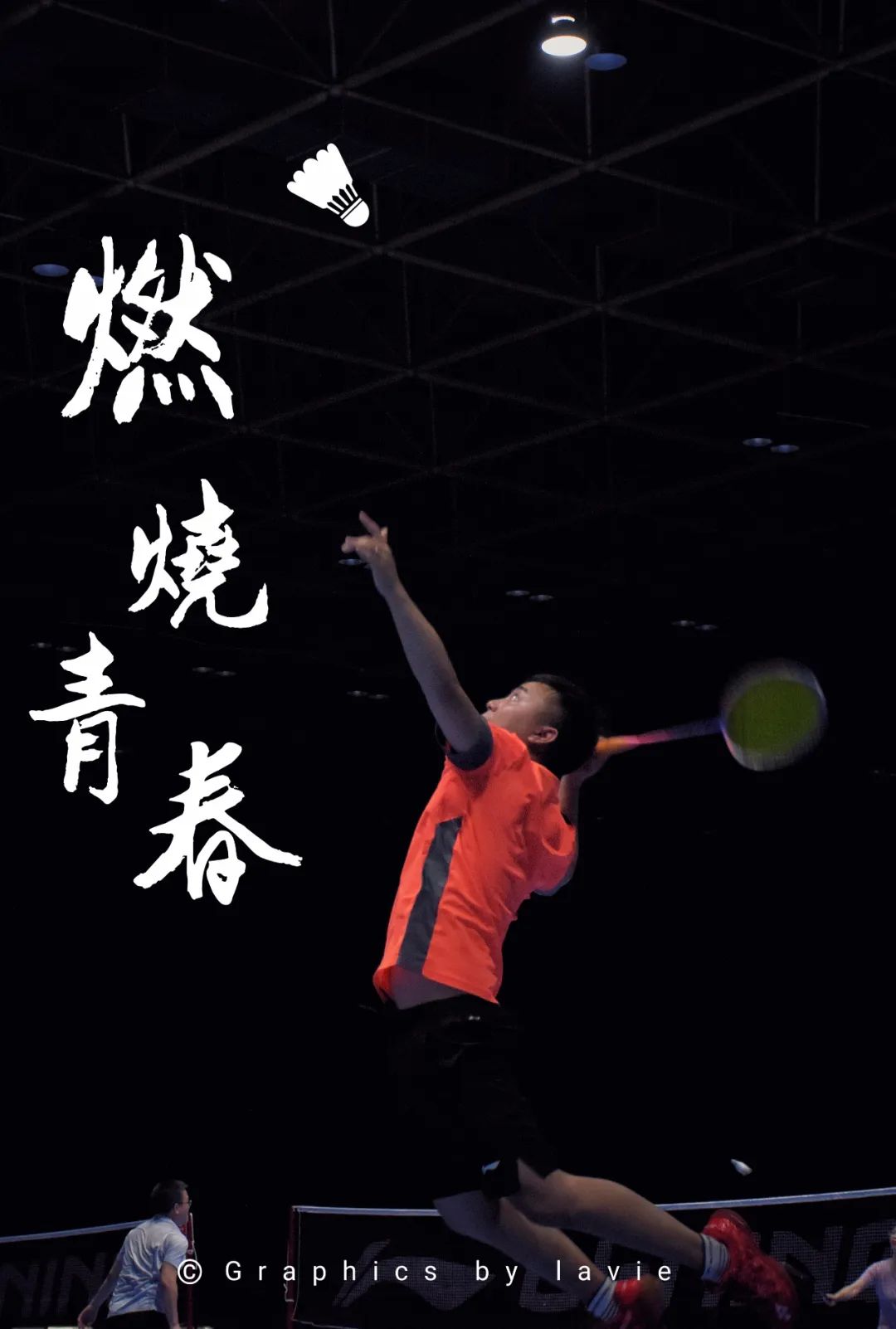
关于作者